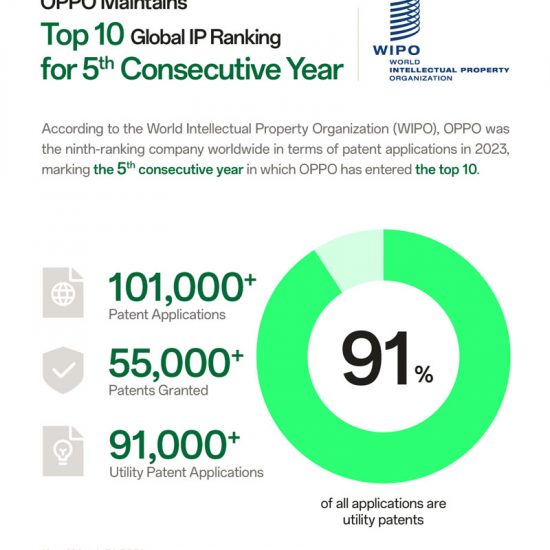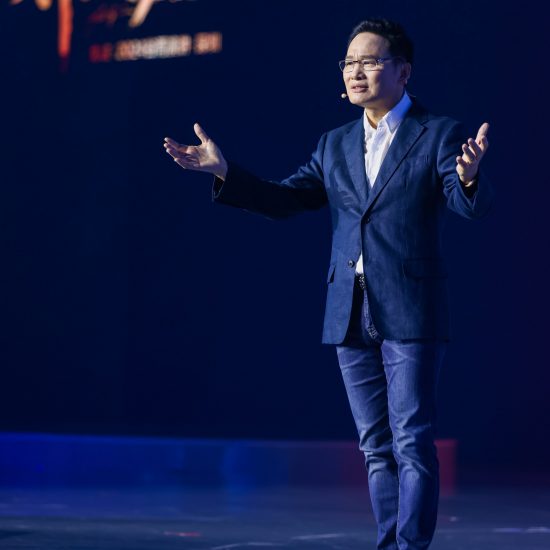|By Matein Khalid|I am often asked by investors to articulate my “philosophy” of real estate investing. Tough question. My ideal deal is one where it is possible to buy brick and mortar assets at 60 – 70% of replacement cost. This usually occurs in the aftermath of a banking crisis or economic shock. This was the case in Florida homes in 2009 or Spanish office space in 2010. Another strategy is to “buy, fix and sell”. This was my rationale for East Kent homes as a proxy for King’s Cross, the biggest retail and office development complex in Britain since Canary Wharf and the Docklands in the Thatcher era. Now that towns like Ashford and Folkestone are linked to Kings Cross St. Pancreas by high speed link, rents will rise, bank mortgages will rise, commuter traffic and capital values will rise in East Kent.
I believe the private and public-property markets are rarely perfectly correlated, offering exceptional, if rare, opportunities for arbitrage in debt instruments or securitized property. Anybody who des not have a diversified portfolio of real estate investment trusts (REIT’s) is denying themselves the potential to make money in some of the world’s hottest real estate sectors and themes, easily accessed via an Interactive Brokers or E-Trade electronic brokerage account. For instance, I had profiled Prologis as the ideal New York REIT to benefit from the industrial boom. Prologis was up 28% in 2017. As I assure my parents, both avid property investors, if you think Wharton is expensive, try ignorance! The US desperately needs to build at least 50 million square feet of extra industrial space every year, thanks to the Amazonisation of the world. Even the US Ari Force is leasing its vast spaces in Nevada to build mega 1 million square feet distribution and logistics centers. This is a 20% per annum growth opportunity for at least the next three years. Timing and the right entry price are everything in real estate investing, as is real time market intelligence. I avoid brokers and mortgage bankers like the plague, just as I do Third World guys who offer to sell me a BMW 7 series for 50,000 dirhams, quick quick Sahib!
As a partner in Asas Capital, I am proud to have raised the equity capital for a 630 room Park Regis four star hotel that will provide some of the Gulf’s most intelligent (they trusted me and their trust is sacred) investors a 15% cash dividend in US dollars and a potential 200% return on initial capital on the project’s eventual flotation or trade sale. Saudi Arabia wants 5 million extra Umra pilgrims by 2020 but Makkah has barely 12000 branded four star hotel rooms. This was the macro opportunity of a lifetime and my partners at Asas Capital began work on this project in 2014, when oil was $114 and religious tourism assets dirt cheap.
I absolutely abhor speculative real estate investments or “buy to let” in markets where a developer can arbitrarily raise service fees at will even when rents fall 20 – 30%. So a AED 2.5 million, 1000 square foot one bedroom flat rents in the Burj Khalifa for AED 120,000 but service fees are AED 72000. A 2% net rental yield makes no sense as if I wanted a bank deposit, I would get one.
Demographics and the credit cycle play a crucial role in property investing. So the exodus of executives due to job losses in banking, property, aviation, construction, retail etc. makes luxury a non no for us in Dubai. The only villas that are selling now are owner occupiers in the 2 to 3 million AED range Villas in the 5 million plus range will have to take a 40% hit to capital. There is a glut of luxury apartments, high end office spare (a Mazaya building sold for 400 AED a square foot, just above construction cost. That is where I see eventual market equilibrium). Investors in British schools, especially if inspired by 120,000 AED a year pseudo-British public schools, will hemorrhage cash as companies slash education subsidies. Note the many high end schools who violate KHDA rules against discounts by offering “founder fees” or two sibling for one package. When hotel revpars fall by double digits, I have only one piece of advice for investors – Get out!
I expect the current trend of falling rents to accelerate in 2018 and even 2019. If rents fall by another 20%, many segments of the property micro markets become affordable again, a huge ballast for Dubai’s trade/services economy.
Stock Pick – Old tech shares in Silicon Valley get into the growth groove
Madonna said it so well “get into the groove, to prove you love for me”. This is how I fell about technology turnarounds in the Valley. I have not felt this good about Cisco Systems since the wonderful summer of 1999. The fiscal first quarter results and guidance were a blowout and the shares are up 20% in 2017. True, 1 – 3% revenue growth is not exactly a FANG metric but it resulted in a historic breakout on the charts. Naturally, I await Cisco’s next target, the February 2, 2001 close of $38.25. Cisco taught me that Warren Buffett was dead wrong when he advised us not to trust market timing but time in the market. “Time in the market in Cisco since its $80 high meant a decade of seeing your investment shredded on NASDAQ. Yet time and tide wait for no man and zit happens. For the Queen’s at Ascot, the Tories are in power (just!), all’s well with the world – and Cisco is no longer ex-growth, though John Chambers is no longer at the helm. The shift from network security has begun to bear fruit. The recurrent revenue model merits a rerating. Yet I cannot put more than a 15 multiple on next year’s Street consensus of $2.6 per share. This leads me to a price target of 39 – 40 on Cisco. Fine but not pulse racing like Arista Networks, up 143% in 2017.
Oracle has been in the doghouse since it disappointed Wall Street on the growth rate of its cloud franchise. Safra Catz/Mark Hurd are two of the most respected software executives in Silicon Valley. The world’s leading relational database platform has now embedded cloud in its corporate DNA.
I remember the time when the philosopher – kings of Sand Hill Road told me why Oracle’s late 1990’s valuation multiple of 100 was justified, so 16 times forward earnings sits well in my neurological paradigm. Larry Ellison has bet his entire legacy on the cloud and artificial intelligence software, though I admit that the acquisition of Sun Microsystems was not his finest hour. Its latest database self-diagnoses, self-heals and self-reengineers. I cannot remotely envisage Cisco trading at its $82 peak in 2018 but Oracle broke out to new highs in June before the latest disappointment. So what gives? I keep the faith with Mark and Safra. Oracle will rock again, only just not yet.
If ever there was a “tech wreck” on Wall Street, it was IBM since 2013. Revenues have fallen from $107 billion then to $79 billion now. IBM has done squat while the S&P 500 index has more than doubled in value. Revenue fell for 19 successive quarters and only self-flagellating masochist (Warren Buffett!) wanted to own IBM even after Ginny Rometty has been CEO for five long painful years. Yet I listen to Bob Dylan whisper to me that the times, yes, the times they are a changing. IBM’s “strategic imperative” growth businesses (Big Data, cloud, cognitive software, services, security etc.) are now 45% of global revenues. Strategic revenues can easily grow 10-12% in the next three years. IBM’s 4.1% dividend yield is the highest since the 1990’s. The shares are dirt cheap at 12 times projected earnings, a huge discount to Mr. Market. True, the true test of IBM’s turnaround (Hallelujah, Virginia! Permanent restructuring is the way to go, as in Chairman Mao’s Cultural Revolution!). The encryption/security features on the latest generation of mainframes is mission critical to protect the world’s biggest corporate and government computer networks from cyber-attacks. If IBM finally regains its “growth groove”, I can easily envision a valuation rerating and a $180 price target next year.
My valued readers know that I had gone gaga on Sony as the ultimate tech turnaround in the past two years. Sony has shed its low margin consumer/PC businesses outside Japan and reincarnated as a New Age streaming video, E-game, movie studio. Investors who share my theses on Sony know that our bullish take on its turnaround has been vindicated – the New York ADR is now up more than 60%! Sony is no longer an Old Tech colossus. It is now something far sleeker, far cooler, far more profitable in the Empire of the Rising Sun!
Macro Ideas – 2017 was the Year of the Bull in Asian Equities
When I first traded global equities in the early 1990’s in New York, the Wall Street cliché de jour was that Asia is a growth warrant on the global economy. So it was no coincidence that most Asian stock markets rose 25 – 35% (China was the outlier at up 45%!) in 2017 amid the first synchronized global expansion since the post Lehman recession of 2008-9. The macro ingredients for a major Asian rally were all in place. A Trump White House that embraced President Xi Jinping and did not launch a trade war with China after all the sound and fury of the election campaign.
Momentum in economic data and offshore flows EPS revisions. A slump in the US dollar and a trading range in the ten year US Treasury note yield. Asia ex Japan’s 22% earnings growth. A spectacular technology and e-commerce revolution across China, India and Southeast Asia. Geopolitical positives – no war in North Korea, Politburo mandated easy money in China, the arrest/conviction of Samsung’s heir and a reformist government in South Korea, Shinzo Abe’s successful snap election a new king in Thailand, structural economic reforms in Indonesia, Vietnam and India.
Despite the fabulous performance of Asian equities in 2017, the bull market has been largely powered by earnings growth, not a valuation rerating. So I have a bias for sector’s and industries that will deliver the strongest earnings growth next year amid a benign macro zeitgeist. There are 25 industry groups in the MSCI Asia ex Japan index and it will be critical to get the sector/themes right next year. For instance, 2017 was the year I flagged China e-commerce (Alibaba up a stunning 75%!), Taiwan’s Apple suppliers, India’s housing finance shares, Singapore banks and South Korea’s Republic of Samsung.
In Asian technology (software, Internet, chips), this is déjà vu 1999 in Silicon Valley. I should know, I spent 1999 shuttling between Palo Alto and my parents’ home in Jumeirah. Technology unquestionably is the sector leader in the Asian bull market that began in early 2016. Irrational exuberance. Yes. Apocalypse now? No. To butcher the Supertramp classic, crisis, what crisis?
Of course, I had once major investment disaster in 2017 (an existential constant in global markets crystal ball gazing business, as I knew only too well!) – Pakistan. The KSE-100 index lost 25% of its value once Supreme Court disqualified pro-business Prime Minister Nawaz Sharif, frontier funds began selling Pakistani blue chip, Habib Bank’s New York branch was ensnared in a money laundering scandal and President Trump publicly castigated the military intelligence agencies in Islamabad’s Aabpara for hosting “terrorist havens”. Pakistan now trades at 8.6 times forward earnings, 5% dividend yield and 1.4 times book value. If Imran Khan is not installed by the military as Prime Minister in 2018, Pakistan’s bull market will resume.
It is impossible to predict Asia’s destiny without reference to the Middle Kingdom and Bharat Mata. I was reading an Asian economic history tome which estimated that India was 27% of global GDP in the year 1700, despite the Mughal Emperor Aurangzeb’s disastrous wars in the Deccan and invasions of Bijapur and Golkonda. In that same year, the Manchu, the Son of Heaven in China commanded an empire with no less than a third of global GDP. In contrast, Stuart/Georgian Britain was a mere 2%, economic sad sack.
As the Chinese central bank (PBOC)’s $47 billion liquidity injection attests, monetary policy has turned stimulative again and earnings growth is accelerating to 18%. China is no longer cheap at 16.8 times earnings and 2 times price/book value but I have no problem finding Chinese megacaps where the risk reward calculus suggests another 25-30% upside. Readers of this column may remember my analysis of Alibaba’s New York ADR way back in 2016, when it was just above 100. Alibaba trades at 190 now.
The Indian government sprung a succession of macro surprises since late 2016. Modi’s rupee demonetisation bombshell, the GS and the Bankruptcy Code. The new rules on public sector bank non-performing loans. Forecasts for 7% GDP growth. Yet the most expensive stock market in Asia cannot coexist with negative earnings revisions. I cannot justify paying 18 times forward earnings for 9% EPS growth at a time when crude oil trades above $60 and the Fed rate hikes will begin to bite. This macro zeitgeist means Bhaluji’s stampede on Dalal Street ends with a bang, not a whimper, in 2018!
Also published on Medium.








